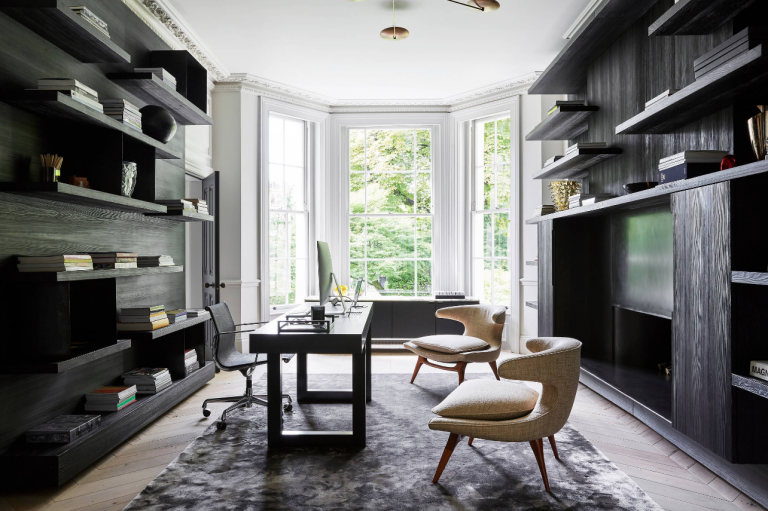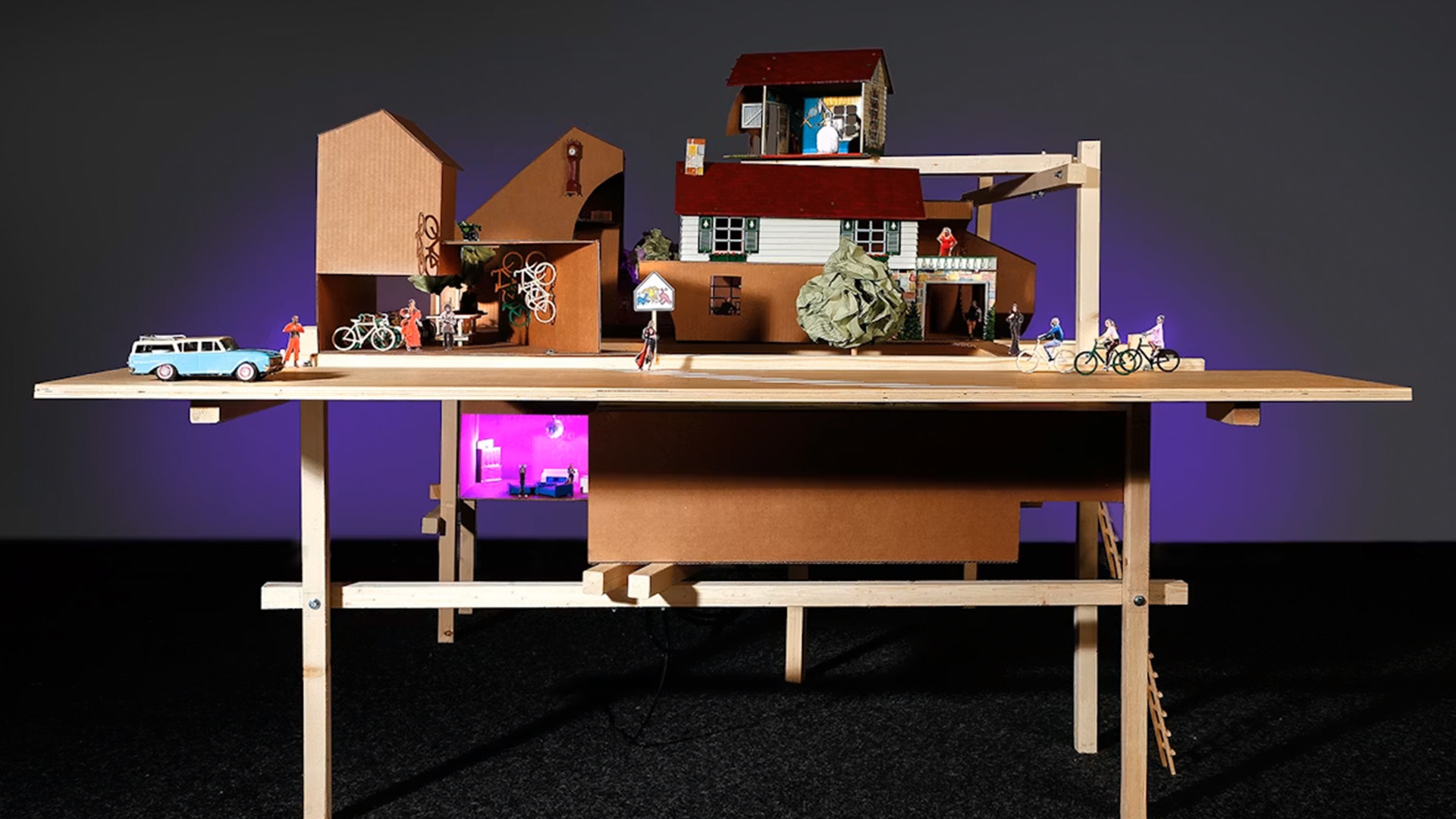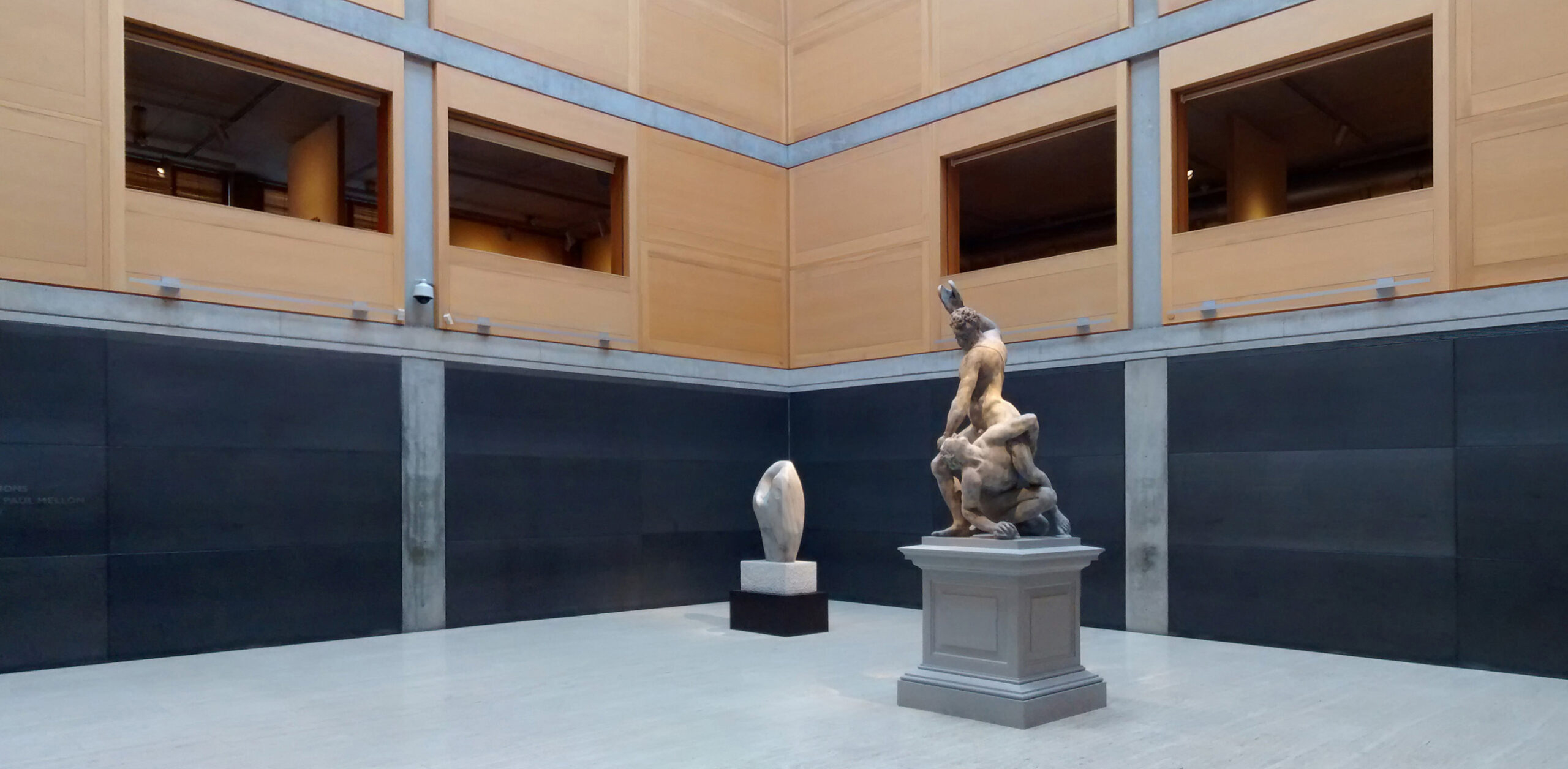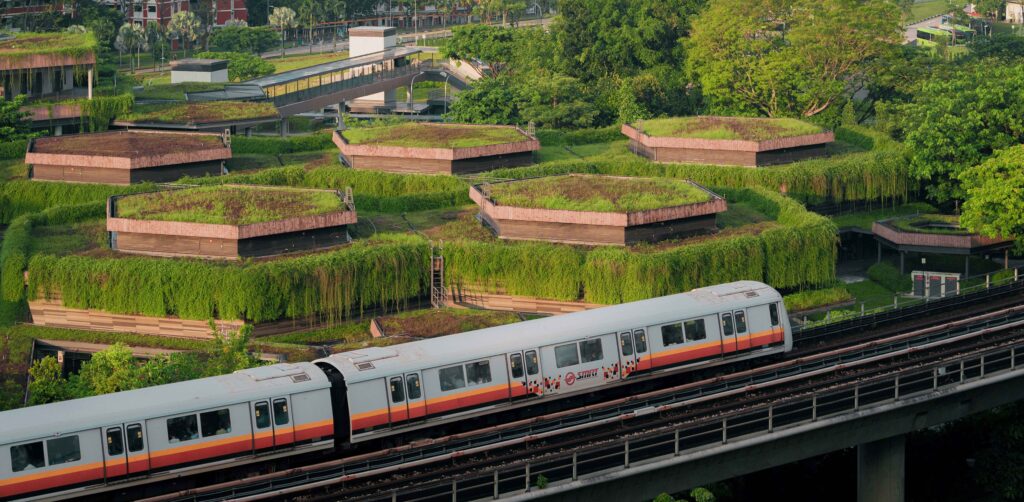Post-industrial landscape reimagined into park among projects from the University of Sheffield


Dezeen School Shows: an urban park with creative spaces informed by Huddersfield's natural environment is among the landscape projects from students at the University of Sheffield.
Also featured is a pedestrian network in the Lower Lea Valley and a university health and wellbeing facility.
University of Sheffield
Institution: University of Sheffield
School: The School of Architecture and Landscape
Courses: BA Landscape Architecture, MLA Landscape Architecture, MA Landscape Architecture, MA Landscape Studies
Tutors: Helen Woolley, Mel Burton, Andy Clayden, Jono Daniels, Nicola Dempsey, Nigel Dunnett, Nathan Edwards, Aimee Felsted, Catherine Higham, Michael Ford, Morag French, Zhixin Liu, Fiona McQuaid, Elisa Olivares, Laurence Pattaccini, James Simpson, Bridget Snaith and Kevin Thwaites
School statement:
"We are one of the leading schools of landscape architecture in the UK, internationally renowned for delivering expertise across landscape design, planning and management.
"Our staff are active researchers and practitioners who challenge students to address the most pressing social and ecological issues of our time. At Sheffield, we view the landscape as a critical agent for change.
"Our teaching is rooted in the unique context of our city and region – a living laboratory of post-industrial regeneration, urban ecology and proximity to the Peak District National Park.
"We equip our students with the creative and critical skills to not only design spaces but to script new futures, forging resilient and equitable environments through powerful, place-sensitive interventions."

Forrest by Kitty Chappell
"The first year landscape architecture studio focuses on developing an understanding of the unique temporal dimensions of landscape space and how they are animated through time, by weather and the changing seasons.
"The design brief sets the university as its client and its ambition to create a more sustainable campus environment where nature prevails.
"This introductory project reimagines the car park, situated in front of the arts tower where the school is located, as a new, urban forest that incorporates outdoor workshops and exhibition space.
"This project enabled Chappell to develop her understanding of a design process and how to apply a range of different drawing and modelling techniques to craft different landscape spaces and experiences.
"Experimental models were used to test ideas of different tree typologies and landform, and to explore bespoke furniture details."
Student: Kitty Chappell
Course: MLA Landscape Architecture, Year 1
Tutors: Andy Clayden and Catherine Higham

Huddersfield Woodland Park by Josie Pearson
"Huddersfield Woodland Park reimagines a post-industrial landscape in Huddersfield as a park of dynamic energy and creative possibility.
"It is situated between the River Colne and the Huddersfield Narrow Canal – two bodies of water that symbolise the town's industrial legacy, craft and radicalism.
"The park is also shaped by the presence of the gasometer, a remnant of private industrial ownership.
"Drawing from this complex legacy, the park also draws from Huddersfield's identity as a place of protest, resistance and political radicalism.
"From Luddism to Chartism, the town has long been a ground for collective action and critical thought. In response, a woodland landlab is proposed, managed creatively by an embedded forestry college and artist community.
"Tension becomes a catalyst for creativity, creating a park which is open-ended, collaborative, experimental and ever evolving."
Student: Josie Pearson
Course: MLA Landscape Architecture, Year 3
Tutors: Michael Ford and Jono Daniels

Landscape as Antidote by Nika Jackson-Moore
"This project explores the contribution of landscape to supporting and enhancing a new university health and wellbeing facility.
"Different woodland typologies, distinct to Huddersfield, are brought together on the health campus as a resilient and healing urban woodland.
"3D sectional models explore the direct relationship between internal and external spaces, contact with nature and journeys through the landscape."
Student: Nika Jackson-Moore
Course: BA/MLA Landscape Architecture, Year 3
Tutors: Andy Clayden and Jo Philips

Piecing the Fragments by Yalin Kuyumcu-Kominami
"This project is a transit-oriented regeneration for the Lower Lea Valley. It proposes a critical east-west pedestrian network to connect sites severed by road, rail and river between West Ham and Bromley-by-Bow.
"The area suffers from profound fragmentation and poor walkability, with communities caught between post-industrial decline and new high-rise development.
"Guided by the principles of stitching, enhancing and creating, the strategy intervenes across 10 sites, including stations, parks and residential areas.
"A continuous walking route, using under, over and through connections, forms the primary armature, visually reinforced by distinct red architectural landmarks.
"A detailed design for West Ham Station demonstrates this approach at a local scale. Drawing on the Dutch Woonerf concept, it transforms an isolated area into a vibrant, pedestrian-focused neighbourhood with reimagined public spaces, showcasing a model for reconnecting the fragmented urban landscape."
Student: Yalin Kuyumcu-Kominami
Course: MLA Landscape Architecture, Year 5
Tutors: Bridget Snaith and Kevin Thwaites

Resistance and Rebirth – the Evolving Identity of the Docks by Enhua Lin
"In response to the large-scale commercial redevelopment of London's Royal Docks, this project proposes an alternative, long-term regeneration vision.
"Resistance and Rebirth challenges conventional urban renewal by embracing the site's industrial ruins and post-industrial ecologies as catalysts for a new landscape narrative.
"The strategy initiates a temporary transformation phase, preserving the ruins while allowing nature to reclaim the land through ecological succession.
"Over time, resilient pioneer plants establish new ecosystems, creating a landscape that evolves organically alongside future housing.
"The master plan delineates permanent preservation zones alongside areas prepared for future development, guiding visitors through five zones on a journey of transformation.
"These include play areas of reclaimed materials, plazas where wild vegetation intertwines with industrial heritage, and gardens that evoke memory and growth.
"This project reimagines decay not as an end, but as fertile ground for a more authentic urbanism – one rooted in time, memory and the poetic potential of ruins."
Student: Enhua Lin
Course: MLS Master of Landscape Studies
Tutors: Andy Clayden and Michael Ford

Infant Hercules x Dunescape by Mark Loveless
"'Infant Hercules, he made the town we know today. Smoke and fire and shipyards, and the steelworks paved the way. We were made from industry, Leave us our identity. Infant Hercules, He must go marching once again.' – Infant Hercules by Teesside's Cattle & Cane.
"Posing the question, How can Infant Hercules go marching once again?, this project proposes a holistic regeneration for the former Redcar Steelworks site.
"It seeks to forge a new, resilient identity for this iconic coastline – one that evolves from its proud industrial heritage rather than erasing it."
"The design vision centres on the creation of a 'designed dunescape' that integrates the site's immense industrial structures with their powerful coastal setting.
"Dramatic steel elements are retained and repurposed as landmarks within the new landscape. The dunescape itself is conceived as a hybrid environment, fusing coastal sand and native species with industrial substrates and materials.
"This synthesis creates unique habitats and guides human activity through a landscape that is both natural and man-made.
"The resulting proposal is an integrated ecological, industrial and heritage park that offers a model for post-industrial regeneration, supporting the ecological, social and economic vitality of this proud coastline."
Student: Mark Loveless
Course: MA Landscape Architecture, Year 2
Tutors: Nigel Dunnett and Fiona McQuaid

Made in Huddersfield by Charlie Bailey
"This urban park interprets Huddersfield's post-industrial landscape as a space defined by the tension between structured formality and spontaneous wilderness.
"Just as nature reclaims agency over derelict brownfield sites, the people of Huddersfield are encouraged to reclaim agency over their landscape by re-shaping it with their own hands.
"Flexible, collaborative spaces empower community stewardship, fostering a unique sense of togetherness sparked by shared acts of making, handicraft and sculpture.
"Huddersfield's industrial legacy is re-spun as a contemporary form of weaving, a celebration of activity, texture and culture."
Student: Charlie Bailey
Course: MLA Landscape Architecture, Year 3
Tutors: Catherine Higham and Michael Ford

Urban Forest Commons by Maddy Nunan
"This project explores a transferable model for urban green space, rooted in the traditions of common land but reimagined for today's social and environmental challenges.
"It merges urban forestry principles with the ethos of the commons, advocating for landscapes defined by a shared purpose, use and stewardship.
"Unlike traditional parks, these commons are co-created and co-managed by empowered communities, ensuring the landscape remains adaptive and resilient.
"The ecological foundation is the 'Forest Mosaic': a diverse habitat designed to mitigate climate impacts like the urban heat island effect.
"A spatial analysis toolkit was developed to identify vulnerable communities in Newcastle lacking woodland access. As a result, the city’s Town Moor, a 400-hectare common with only four per cent tree cover, was selected as the primary demonstration site for this innovative model of shared urban nature."
Student:
Course: MLA Landscape Architecture, Year 5
Tutors: Nicola Dempsey, Elisa Olivares and Nathan Edwards

Bridging Differences: Building a Home for All by Tianle Qi
"This project provides a design framework for urban coexistence, aiming to foster a sense of belonging in the face of growing spatial inequality.
"The master plan is structured by a central landscape axis, a public spine connecting the main street to the inner neighbourhood and drawing civic life deep into the site.
"A choreographed sequence of five public spaces unfolds along this axis, from the landmark-facing Churchfront Plaza to a quiet Lawn Retreat, offering a layered public realm for diverse needs.
"Residential zones are arranged in courtyards interwoven with shared spaces, creating soft thresholds that thoughtfully mediate between private and collective life.
"The design explicitly responds to those often overlooked in conventional development. By prioritising openness, accessibility and shared use, the project demonstrates how landscape architecture can bridge physical and social divides, creating not just a place to live, but a place to belong."
Student: Tianle Qi
Course: MA Landscape Architecture, Year 2
Tutors: Aimee Felstead, Zhixin Liu and James Simpson

Greenhill Park – Ecological Design and Management by Hannah Sevant
"The aim of this project is to enhance the park's existing qualities, including its strong sense of community, valued ecosystems and distinctive identity, while creating a more vibrant, diverse space.
"Proposed changes include the creation of varied environments, such as new woodlands, meadows, wetlands, alongside dramatic tree avenues, nature play areas and bike tracks.
"These changes will complement the preserved mown lawns and offer flexible spaces for activities, from cycling and running to relaxation and social interaction.
"This transformation will provide new opportunities for people of all ages to engage with nature, help protect wildlife, mitigate flooding and enhance resilience to climate change."
Student: Hannah Sevant
Course: MLA Landscape Architecture, Year 2
Tutors: Mel Burton and Morag French
Partnership content
This school show is a partnership between Dezeen and the University of Sheffield. Find out more about Dezeen partnership content here.
The post Post-industrial landscape reimagined into park among projects from the University of Sheffield appeared first on Dezeen.





















































